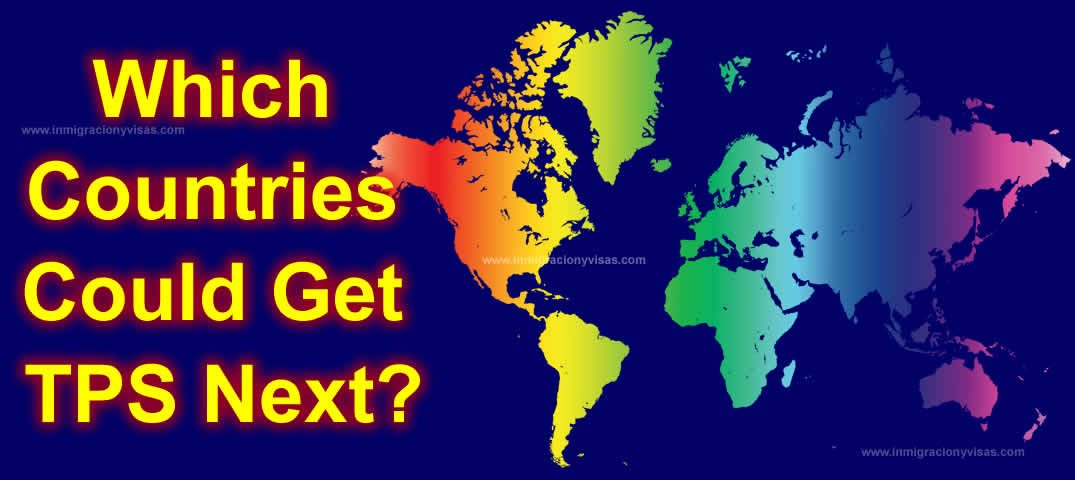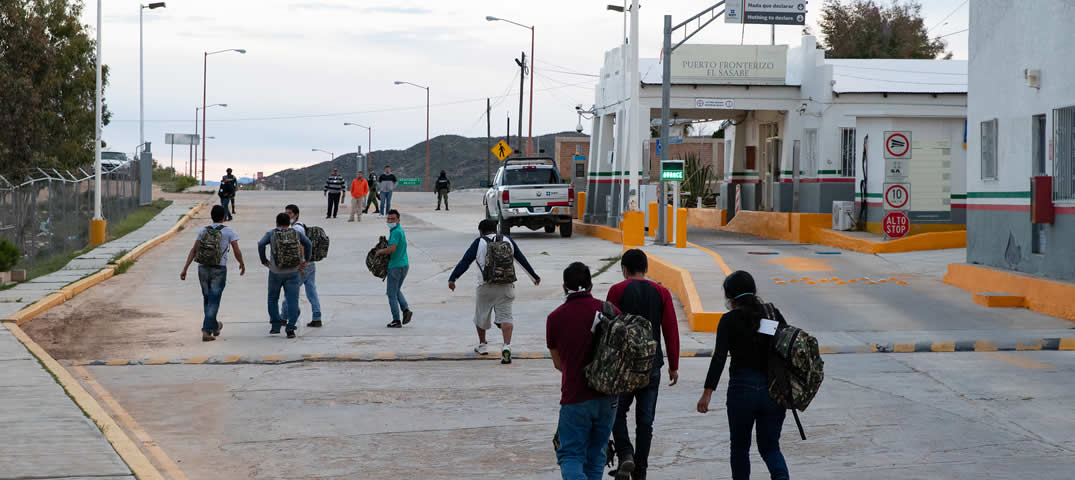Explaining Title 42 Expulsions at the Border

By: Jorge Loweree www.americanimmigrationcouncil.org - Photography: Arog Vila
The ability to seek asylum in the United States is a fundamental human right. But since March 2020, that right has largely been suspended.
U.S. government officials began “expelling” people who arrive at our southern border without any due process protections in the early days of the COVID-19 pandemic.
They have carried out hundreds of thousands of expulsions under a little-known provision of U.S. health law called Title 42. Despite objections from scientists, the Trump administration implemented Title 42 to close the border to immigrants and asylum seekers.
Many asylum seekers continue to be expelled back to Mexico or their home countries under Title 42. The Biden administration has not put forward any plan to end the use of Title 42 at the border.
What is Title 42 and how did it go into place?
On March 20, 2020, the Department of Health and Human Services (HHS) issued an emergency regulation to implement a specific aspect of U.S. health law. Section 265 of U.S. Code Title 42 permits the Director of the Centers for Disease Control and Prevention (CDC) to “prohibit … the introduction” into the United States of individuals when the Director believes that “there is serious danger of the introduction of [a communicable] disease into the United States.” The rule allows any customs officers—which includes officers of U.S. Customs and Border Protection (CBP) such as Border Patrol agents—to implement any such order issued by the CDC.
The same day, Director of the CDC Robert R. Redfield relied on this regulation to issue an order suspending the “introduction” of certain individuals who have been in “Coronavirus Impacted Areas.” The order targets individuals who have entered the United States from Canada or Mexico and “who would be introduced into a congregate setting” at a port of entry or in a Border Patrol station. This included individuals who would normally be detained by CBP after arriving at the border, including asylum seekers, unaccompanied children, and people attempting to enter the United States without inspection. Citing the new CDC order, that same day the Border Patrol began “expelling” individuals who arrive at the U.S.-Mexico border, without giving them the opportunity to seek asylum.
The CDC order does not apply to U.S. citizens, lawful permanent residents, and their spouses and children, nor does it apply to U.S. military personnel or those who arrive at a port of entry with valid travel documents, although the CDC maintains that it has the authority to expel U.S. citizens under Title 42 if it chooses. The rule also includes an exemption for anyone that the Department of Homeland Security (DHS) determines should be allowed into the United States on “consideration of significant law enforcement, officer and public safety, humanitarian, and public health interests.”
Despite the CDC’s claim that this order was necessary to protect the United States from a public health perspective, reporting has shown that the origin of this policy came from DHS and the Trump White House. Public reporting indicates that CDC scientists expressed opposition to this invocation of Title 42, arguing that there was no public health rationale to support it. Public health experts outside the CDC have since largely agreed, arguing that while international borders remain largely open to other travelers, there is no need to turn away refugees and expel them to their home countries or to Mexico.
Federal courts have also rejected the legal basis for the use of Title 42 to expel individuals who have entered the United States. At least one federal judge has ruled that the law only gives the government the authority to turn away people who have not yet entered the United States or impose quarantine for those already inside the United States.
On May 19, 2020, the order was extended indefinitely, with the CDC Director declaring that the order will extend “until I determine that the danger of further introduction of COVID-19 into the United States has ceased to be a serious danger to the public health, and continuation of the Order is no longer necessary to protect the public health.” The May 19 order further extended the suspension on entry to individuals who enter the United States via a coastal border, having previously been limited only to those who enter via a land border.
The order will remain in place indefinitely, with the CDC required to “review the latest information regarding the status of the COVID-19 pandemic” every 30 days.
On September 11, 2020, HHS published the final version of the March interim regulation enabling the CDC Director to issue orders suspending the “introduction” of people at the border. In the rule, the CDC acknowledged for the first time that its order is being used to turn away refugees and asylum seekers and declared its belief that doing so was legal.
How has Title 42 been implemented at the border?
After the CDC order was issued, the Border Patrol began to expel migrants arriving at the border. Under an agreement reached with the Mexican government in late March 2020, the Border Patrol began sending most Mexican, Guatemalan, Honduran, and Salvadoran families and single adults to Mexico. Despite this agreement, there has been extensive documentation of individuals expelled to Mexico who do not fit within this category, including Haitian asylum seekers.
Those who aren’t sent to Mexico are held in U.S. Immigration and Customs Enforcement (ICE) or CBP detention and flown back to their home countries without any opportunity to seek asylum. Since March, thousands of Haitians families seeking asylum have been subjected to this process and summarily returned to Haiti, although flights to Haiti were briefly suspended after outcry following President Biden’s inauguration.
Individuals who are expelled do not receive an order of deportation, but CBP collects their biometrics and records their contact with the agency. It is unclear how this information will be used in the future, or how it may impact an individual’s ability to seek protection in the United States once the coronavirus pandemic has subsided.
In March 2020, as part of Title 42, CBP also stopped processing all asylum seekers who arrive at ports of entry and ask for humanitarian protection. This led to nearly 15,000 people who had been waiting on lists for an opportunity to request asylum at ports of entry (a practice known as “metering”) to be left in limbo, with no ability to seek asylum.
In addition to turning away asylum seekers, CBP used this order to turn away and expel nearly 13,000 unaccompanied children, despite provisions of the Trafficking Victims Protection Act which require the government to protect children who arrive at the border without a parent or legal guardian.
On November 18, 2020, the practice of subjecting unaccompanied children to expulsions was halted by a federal judge, who held that it violates the Trafficking Victims Protection Act and other laws. After a federal court stayed that order in January 2021, the Biden administration amended the Title 42 order from the CDC to exempt unaccompanied children. As a result, unaccompanied children who arrive at the border have not been expelled since November 2020.
By February 2021, CBP had carried out more than 520,000 expulsions. Download the
Title 42 Fact Sheet
Before Title 42 was implemented, individuals hoping to seek asylum often were turned back through a practice known as “metering.”
Under metering, CBP officials limited the number of people who could access the asylum process each day. To do so, asylum seekers were turned away before they could step onto U.S. soil.
Individuals then had to place themselves on metering lists in Mexico, and wait an unspecified amount of time for their number to be called so they could start the asylum process in the U.S.
It’s estimated that over 15,000 people were still on lists as of November 2020. Many lists closed once the U.S. stopped processing asylum seekers under Title 42.
The Biden administration has likewise not announced what—if anything—it plans to do for those stuck in metering limbo. Download the
Title 42 Fact Sheet
Public health experts have made it clear to the Biden administration: it should not expel asylum seekers in the name of public health.
President Biden must end both practices and restore people’s right to seek asylum.
Providing resources like these is only possible with your support. Please consider donating today.
Estos artículos también te pueden interesar:
Which Countries Could Get Temporary Protected Status (TPS) Next?

Advocates are urging the Secretary of Homeland Security to designate additional countries...
The Plan to Process Asylum Seekers Subject to the Migrant Protection Protocols

One of President Biden’s first actions instructed U.S. Customs and Border Protection...



